Using a pH meter and lowest pH to kill botulism
cabrita
14 years ago
Featured Answer
Sort by:Oldest
Comments (65)
ksrogers
14 years agolast modified: 9 years agodigdirt2
14 years agolast modified: 9 years agoRelated Discussions
Water, pH, fertilizer
Comments (12)Hi, Jane. What Bill Argo says is: "Larry Metcoff and I designed two fertilizer formulas to be used with the two types of irrigation water found at MSU.... The formula for pure water (13-3-15) was designed to be used with reverse osmosis purified water. Specifically, the 13-3-15 contains very low ammoniacal nitrogen (acetic nitrogen) to match the very low alkalinity of RO water...." So it sounds like they mainly wanted to keep the alkalinity low while supplying a complete spectrum of nutrients. Which basically (pardon the pun) is the same as saying that the fertilizer would contain no buffering agents, which by definition are alkaline. I think that's half your question answered. As to what's pulling it down - I haven't a clue. Also, the pH of RO or rainwater can vary. "F.R." states that RO water has a pH of 7.0. Period. Bill Argo (one of the designers) states that RO purified water or rain water can have a pH range of 4.0 to 5.5. That's a big discrepancy between opinions there! I took my measurements today after recalibrating my meter. Water our of my tap was 7.2. My MSU fertilizer solution at 1/2 tsp. per gallon was 6.1. Since you use twice as much, my drop of about one point coincides with your drop of about two. I'll also say that I tested my former fertilizer (18-18-18) that contained practically all ammoniacal nitrogen. My turn to be shocked when the pH solution only dropped half a point when used at the same rate as I'm presently using with the MSU. But I am using tapwater, which may be more buffered. Finally, one of my articles gives the following equivalences for MSU pure water formula: 1/2 tsp. (slightly heaping) gives 103 ppm of nitrogen. 1 tsp. gives 172 ppm of nitrogen. Recommendation from Bill Argo article is 125 ppm with every irrigation. BUT, this was not designed with orchids in mind. So I wonder if that dosage is more than needed. I think I'll stick with my half tsp. For articles about MSU fertilzer, in addition to the Argo article "Understanding pH Management and Plant Nutrition", see: http://orchidweb.org/aos/orchids/withouthighphosphorus.htm For the proportion I referenced, and others, see www.growinhydro.com/21332.html HTH, John :>)...See Morequestion about pH for a Master Preserver...
Comments (6)Hi Cathy - while testing your own pH isn't recommended by the USDA guidelines the FDA does approve the use of litmus and pH meters, with some attached provisions, (edited to add - for acidic foods, low-acid and/or mixtures of low-acid foods are not included) for commercial sales. Your state and county guidelines for commercial sales should provide the rules applicable to you as they vary from state to state.. That said, for non-commercial use with Apple-Pear Butter (assuming no windfalls or Asian Pears were used) pH isn't normally a concern as the only risks are molds and yeasts. Many fruit products are canned without the addition of lemon or sugar and often the lemon called for is for color preservation only. Otherwise the fruits themselves provide the proper level of acidity for safe canning. Reduced Sugar or sugar supplement Apple Butter does call for a little longer processing time - 1/2 pints or pints for 15 min. in a BWB with the time adjusted for altitude. Hope this answers your question. If not let us know. Dave Here is a link that might be useful: NCHFP - Reduced Sugar Apple Butter This post was edited by digdirt on Wed, Oct 2, 13 at 16:33...See MoreRoses & plants in heavy clay, pH 8, zone 5a, 38" rain and 23" snow
Comments (58)Just thought I'd post the results I had in one garden bed that's clay-loam. Last year I had amended this bed with home-made compost. Everything did well last year as first year plantings. This year they suffered from too little light. (I just put the roses there to get them through the winter and hoping they might like the eastern exposure. Heathcliff, Sugar Moon and Falstaff like sun in my neck of the woods, it seems. I'll probably be moving the viking Queen next Spring as she's a fraction of the size of her sister in full sun, and hasn't bloomed since Spring while her sister would be non-stop if not for the midge.) Anyway, the soil was very dry even with rain. I thought the heavy leaf layer prevented water. I stuffed the empty holes with alfalfa hay, compost and leaf mold until I decided what to plant. I also put the alfalfa under the leaves in the rest of the bed and gave it additional compost. Wow, when I went to plant Lavender Lassie and two hydrangeas, all the soil was so soft and fluffy and moist, even though we had less rain that earlier. I'm now prepping my holes in advance of next Spring and filling them with the same and covering the entire bed with alfalfa hay, etc. The new plantings have taken off even in the reduced light of late summer. I repeated this in another new bed and Mme Alfred Carriere and Awakening seem to love it even in their NE exposure. (Of course, they could just be responding to being in the ground vs. in pots. : ) ) Lesson learned. : ) I'm also trying gypsum on some new beds I'm prepping since they're on an incline. I'll report back....See MoreBest soil and pH for different roses & plants & your goals and plans
Comments (32)Just went out to check all my leaves. The disease-resistant roses with glossy foliage all have 7-leafets: Kordes Flower Carpet, Pat Austin and Tchaikovsky. Kordes Flower Carpet doesn't have mildew in shade, but Knock-out (5-leaflet) has mildew. Other DISEASE-RESISTANT with 7-leaflets: William Shakespeare 2000, Duchess de Rohan, Excellenz von Schubert, Annie L. McDowell, Blue Mist, Poseidon, Cloudert Soupert, and Crown Princess Mag. ... all have leaves in set of 7. These can take wet soil well, like multiflora rose thriving in wet lands. But the blackspot-prone roses: Comte de Chambord and hybrid teas have leaves in set of 5, and much larger & round leaves. These prefer well-drained soil, and tend to blackspot with prolonged wetness & acidic rain. Multiflora-leaves are clearly a set of 7, see below pic: http://na.fs.fed.us/spfo/invasiveplants/factsheets/pdf/multiflora-rose.pdf "Each multiflora leaf as 5 to 11 one inch-long oval leaflets with toothed margins. The undersides of the leaflets have tiny hairs and are paler than the upper surface. The base of each leaf stalk has a characteristic stipule (green, leafy structure) with hairs or a comb-like fringe along its margins. Flowers. As indicated by its scientific name Rosa multiflora, this plant has abundant, showy clusters of flowers which typically are white, though sometimes slightly pink." Below is Austin rose William Morris, which did terrible in slightly acidic wet & peaty potting soil, then finally died when I put in my wet clay made acidic with cracked corn. Note the leaves are in a set of 5, which means it prefer well-drained & loamy soil, and CANNOT take acid & wetness like those of set-7 leaves. Folks complain about WM being stingy and rust-fungal-prone. The drought-tolerant & disease-resistant Rugosa has rounder leaves in set of 9, plus very bristly canes full of thistles, see below:...See MoreLinda_Lou
14 years agolast modified: 9 years agochmst1999
13 years agolast modified: 9 years agotracydr
13 years agolast modified: 9 years agochmst1999
13 years agolast modified: 9 years agotracydr
13 years agolast modified: 9 years agofoothillfarm
13 years agolast modified: 9 years agoLinda_Lou
13 years agolast modified: 9 years agodigdirt2
13 years agolast modified: 9 years agofoothillfarm
13 years agolast modified: 9 years agotracydr
13 years agolast modified: 9 years agoLinda_Lou
13 years agolast modified: 9 years agodigdirt2
13 years agolast modified: 9 years agotracydr
13 years agolast modified: 9 years agopattypan
13 years agolast modified: 9 years agodigdirt2
13 years agolast modified: 9 years agoflutterbyca
13 years agolast modified: 9 years agoLinda_Lou
13 years agolast modified: 9 years agomacybaby
13 years agolast modified: 9 years agodigdirt2
13 years agolast modified: 9 years agocalliope
13 years agolast modified: 9 years agobunnyman
12 years agolast modified: 9 years agoJohn__ShowMe__USA
12 years agolast modified: 9 years agodigdirt2
12 years agolast modified: 9 years agoLinda_Lou
12 years agolast modified: 9 years agomacybaby
12 years agolast modified: 9 years agohcoon
12 years agolast modified: 9 years agohcoon
12 years agolast modified: 9 years agodigdirt2
12 years agolast modified: 9 years agoNearlyNomads
11 years agolast modified: 9 years agoreadinglady
11 years agolast modified: 9 years agotexasjohn
11 years agolast modified: 9 years agodigdirt2
11 years agolast modified: 9 years agotexasjohn
11 years agolast modified: 9 years agoRefused
10 years agolast modified: 9 years agoreadinglady
10 years agolast modified: 9 years agodigdirt2
10 years agolast modified: 9 years agoreadinglady
10 years agolast modified: 9 years agokriswrite
10 years agolast modified: 9 years agodigdirt2
10 years agolast modified: 9 years agoLinda_Lou
10 years agolast modified: 9 years agoRefused
10 years agolast modified: 9 years agoRefused
10 years agolast modified: 9 years agonortheast_chileman
9 years agolast modified: 9 years agodigdirt2
9 years agolast modified: 9 years agoseysonn
9 years agolast modified: 9 years ago2ajsmama
9 years agolast modified: 9 years agoseysonn
9 years agolast modified: 9 years ago
Related Stories

LIGHTINGThe Lowdown on High-Efficiency LED Lighting
Learn about LED tapes, ropes, pucks and more to create a flexible and energy-efficient lighting design that looks great
Full Story
FIREPLACESUpdated Woodstoves Keep Home Fires Burning
Better technology means more efficiency than ever for modern woodstoves
Full Story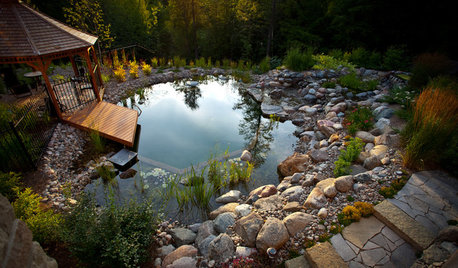
LANDSCAPE DESIGNNatural Swimming Pools: More Beauty, No Chemicals
Keep your skin and the environment healthy with a pool that cleans itself, naturally
Full Story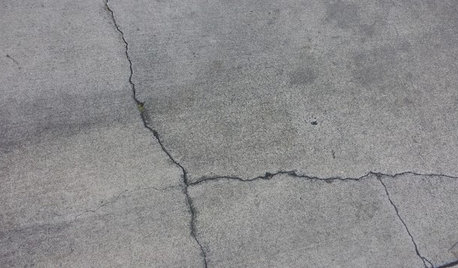
CONCRETEWhy Concrete Wants to Crack
We look at the reasons concrete has a tendency to crack — and what you can do to help control it
Full Story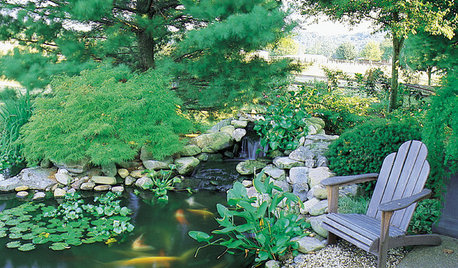
GARDENING AND LANDSCAPINGHow to Make a Pond
You can make an outdoor fish paradise of your own, for less than you might think. But you'll need this expert design wisdom
Full Story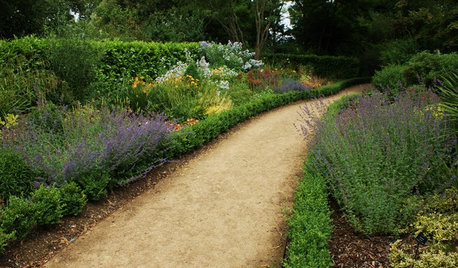
LANDSCAPE DESIGN5 Gravel and Stone Types for a Rockin' Landscape
Give your garden design some textural bam with pebbles, granite, river rocks and other permeable materials
Full Story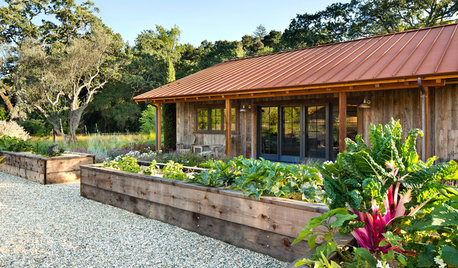
EDIBLE GARDENSHow to Grow Your Own Sweet Summer Crops
This guide will help any gardener get started on growing the freshest warm-season veggies and berries for summer
Full Story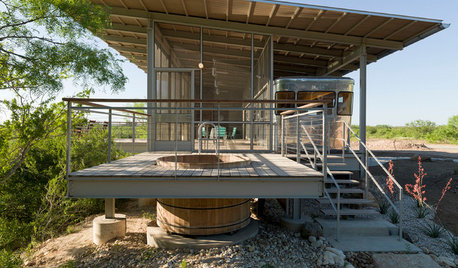
LIFERetirement Reinvention: Boomers Plot Their Next Big Move
Choosing a place to settle in for the golden years? You're not alone. Where boomers are going and what it might look like
Full Story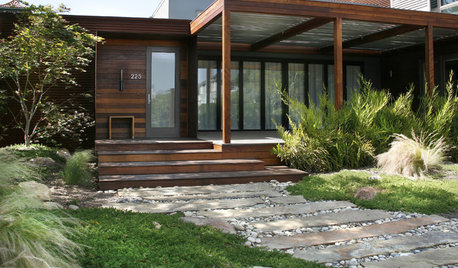
LANDSCAPE DESIGN7 Low-Maintenance Lawn Alternatives
Turf isn't the only ground cover in town. Get a lush no-grass lawn with clover, moss and other easy-care plants
Full Story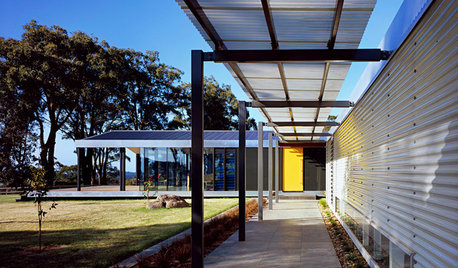
MODERN HOMESHouzz Tour: Stylish Farmhouse Addition Keeps a Low Profile
This country home’s redesign is all about living quietly and comfortably and taking in the views
Full StorySponsored
Central Ohio's Trusted Home Remodeler Specializing in Kitchens & Baths



foothillfarm